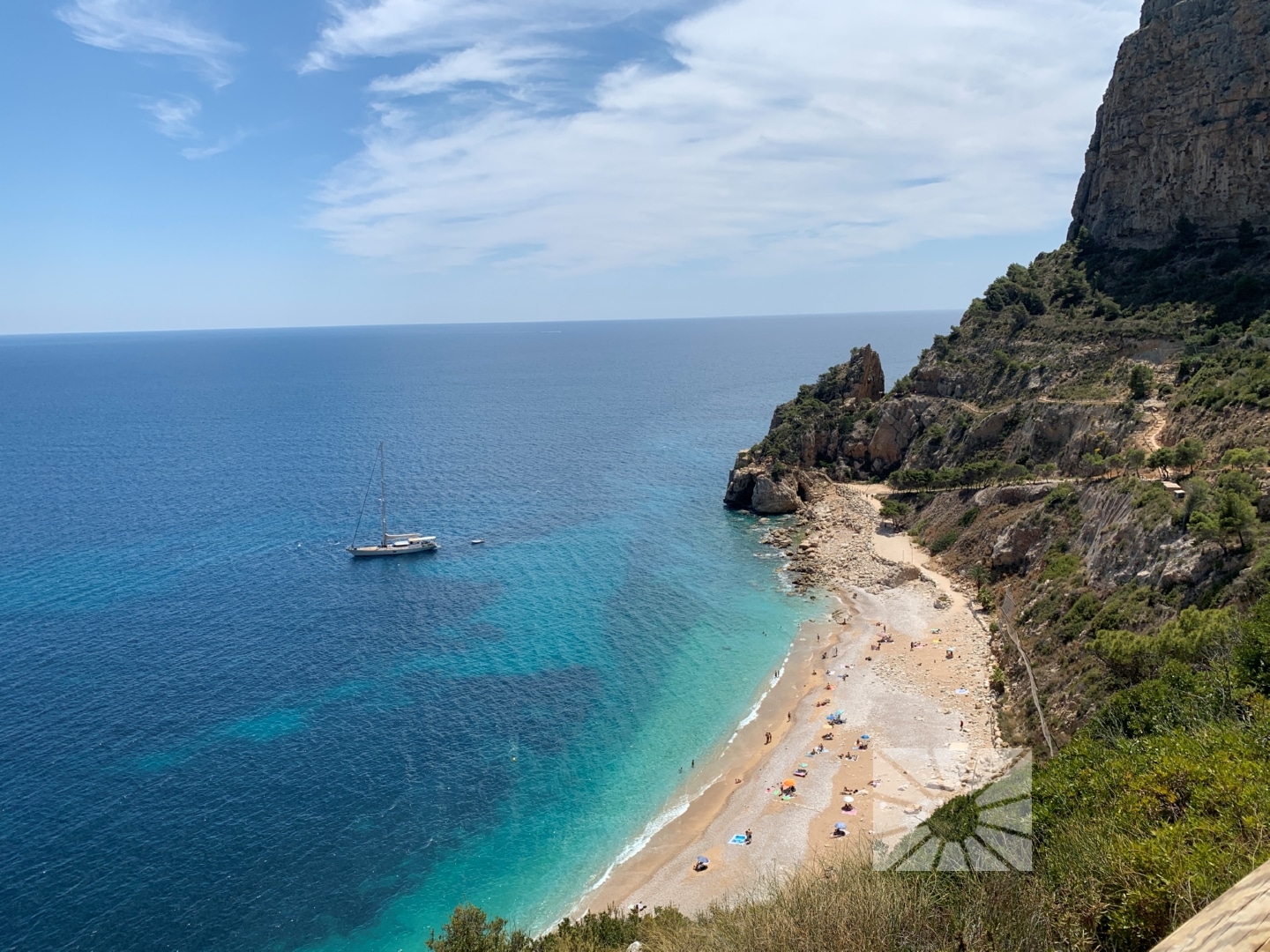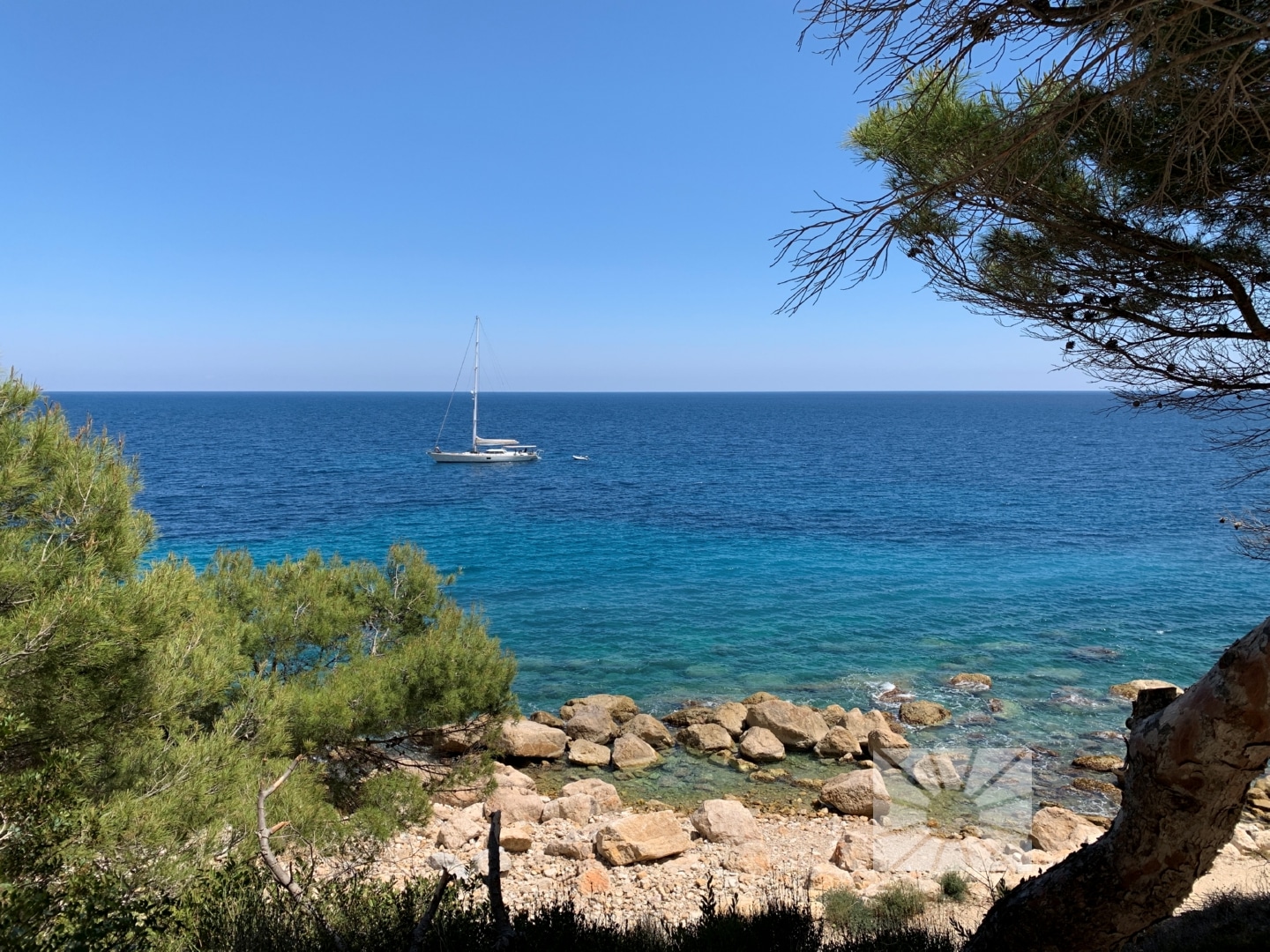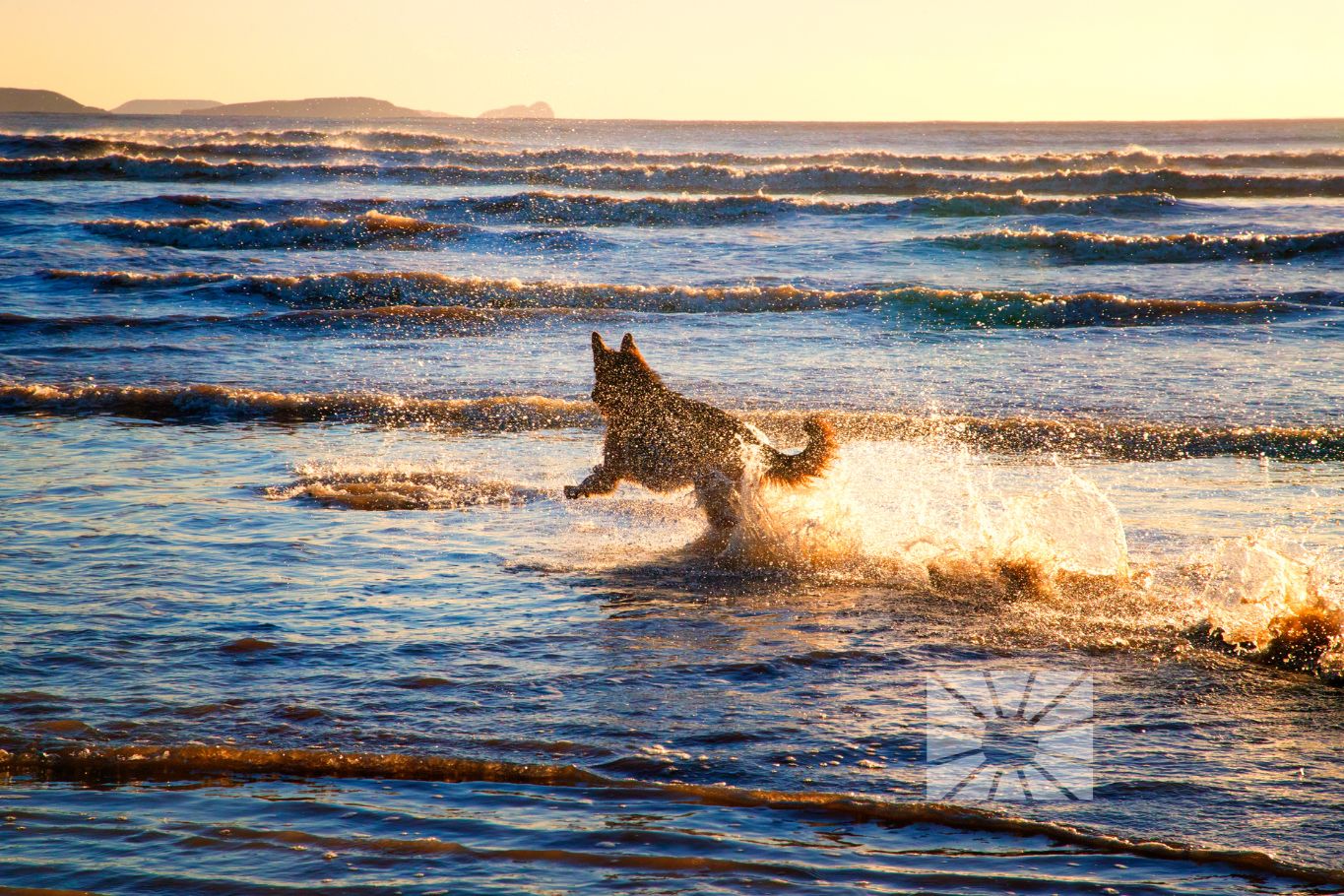
Aug 29, 2023 | Activities/Services, Events
The Costa Blanca North, in the northern region of Alicante in Spain, is known for its beautiful beaches with crystal-clear waters and breathtaking scenery. If you are travelling with your faithful furry friend, you are lucky, as this region offers several dog-friendly beaches where you and your dog can enjoy the sea breeze and the Mediterranean breeze together. In this post, we take you on a tour of some of the best dog-friendly beaches on the Costa Blanca North, where fun and relaxing moments are guaranteed for everyone.
- Mar y Montaña Beach, Altea: Playa Mar y Montaña, located in Altea, is a paradise for dog lovers and their owners. This beach offers a quiet and relaxed atmosphere, with plenty of space for your dog to run and play freely. Pets are allowed all year round, making it a perfect choice for a beach getaway with your furry friend in any season. Enjoy the crystal clear waters and stunning mountain views while your dog has fun exploring the coastline.
- Cala Les Urques in Calpe: The colourful Cala Les Urques, located in Calpe, is another dog-friendly option you won’t want to miss. This small cove is a hidden corner with turquoise waters and surrounded by cliffs, creating a quiet and secluded atmosphere. While the main cove does not allow dogs, you can follow the path that leads to a small rocky beach nearby where dogs are allowed. Here, your dog can enjoy a refreshing dip while you take in the natural beauty this place has to offer.
- Playa de la Escollera Norte in Denia: Playa de la Escollera Norte, in Denia, is another dog-friendly option that will allow you to enjoy a day at the beach with your dog. This beach has a dog-friendly area, where they can run around and enjoy the sea without restrictions. In addition, the beach is equipped with showers for dogs, which makes the visit even more comfortable and pleasant for both of you.
- L’Olla Beach in Altea: Playa L’Olla, located in Altea, is known for being a dog-friendly beach where dogs are welcome. This beach with calm seas and a family atmosphere is ideal to spend a relaxing day by the beach with your dog. Enjoy a stroll along the shore, play in the sand or just relax in the sun while your furry friend enjoys the atmosphere.
Exploring the dog-friendly beaches of the Costa Blanca North is an exciting experience that will allow you to enjoy the sun and sea with your dog. From wide beaches to charming coves, each place will provide you with unforgettable moments of fun and relaxation. Remember to always respect the local rules and keep the beach clean, taking with you bags to pick up your dog’s waste. Get ready to live moments of joy and connection with your faithful friend on the dog-friendly beaches of the Costa Blanca North!
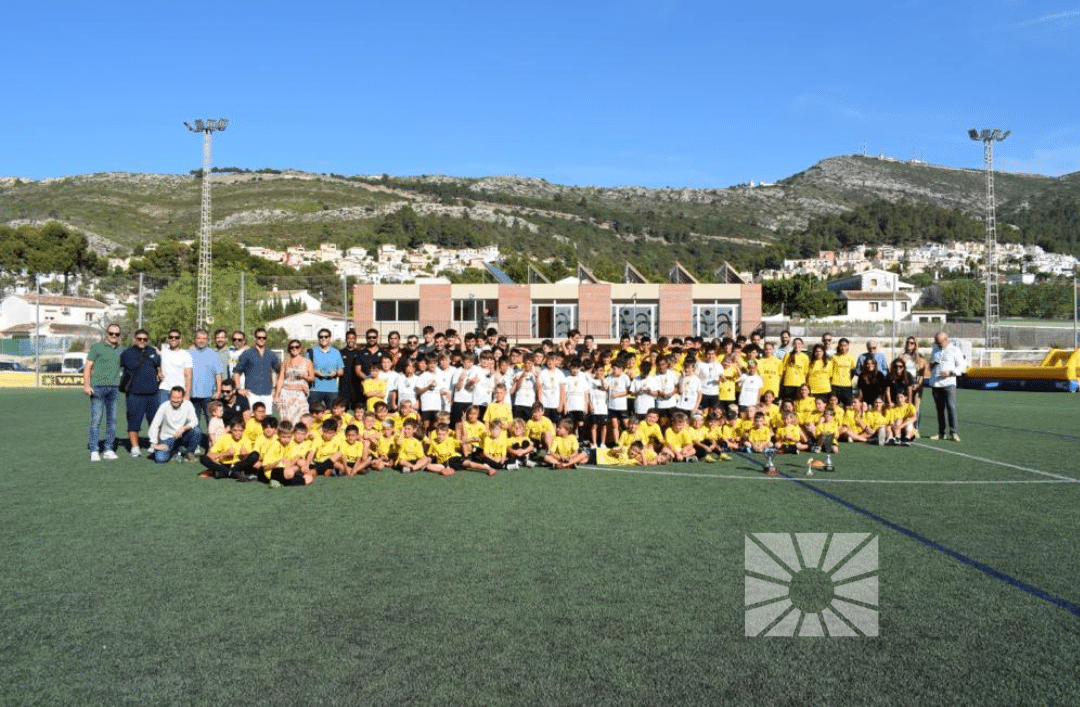
Jun 20, 2023 | Activities/Services, Benitachell
Once again, the VAPF group has been present at the closing ceremony of the Benitatxell Base Football School (F:B: Benitachell), as sponsors of the same.
At the event, trophies and medals were presented to the boys and girls of the school, who have shined this season, obtaining spectacular results. Benjamin A and Benjamin B were proclaimed league champions, and Alevín B were runners-up. In addition there is one more point to be made this year, as it was the first season that F.B. Benitachell had a women’s team. A total of 177 children have made history.
From VAPF we would like to congratulate them on these results, both the students and their coaching staff. We are delighted to be able to support the Benitatxell municipal football school, to promote the practice of sport, the values involved, teamwork, healthy living, companionship, equality, sportsmanship, effort, so important at this age, we are proud to be able to contribute to it.
See you next season, happy summer to all.
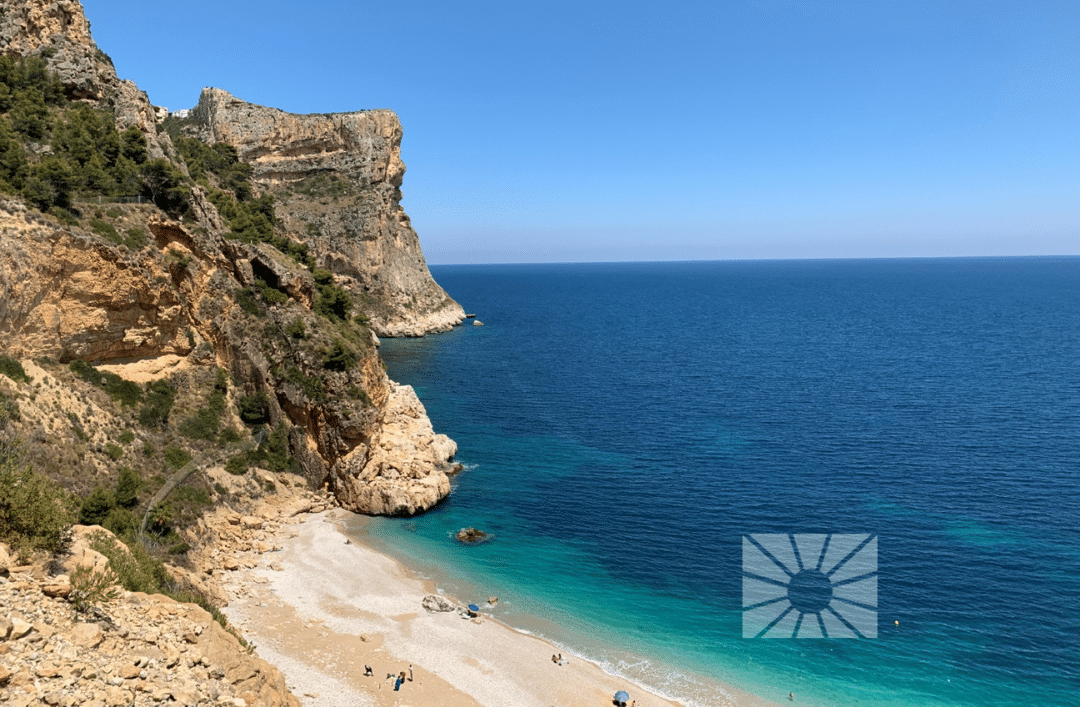
May 17, 2023 | Activities/Services
Once again this year the quality of the Costa Blanca North is evident, on this occasion the quality of its beaches, coves and marinas.
The Foundation for Environmental Education (FEE) through Adeac (Association for Environmental and Consumer Education) internationally recognises the high quality of the water of a beach or cove, but also values and rewards the accessibility, the sanitary measures it is equipped with, and the actions carried out to promote environmental education, without forgetting cleanliness and safety.
Here are the beaches, coves and marinas awarded with the blue flag 2023:
Altea: Cap Blanc, La Roda, L’Espigó and Altea Nautic club
Calpe: Cantal Roig, La Fossa, L’Arenal Bol and the Real Club Nautic of Calpe
Benissa: Cala Baladrar, Cala Fustera and Les Bassetes Sailing Club
Teulada-Moraira: El Portet, L’Ampolla, Platgetes and Moraira Nautic Club
El Poble Nou in Benitachell: Cala del Moraig
Xàbia: Granadella, La Grava and the Jávea Nautic Club
Denia: Les Bovetes, Les Marines, Marineta Casiana, Molins, Punta del Rasset, Marina Denia and the Real Club Nautic of Denia.
20 beaches and coves and 7 marinas within a radius of 30 kilometres with blue flag 2023, one more reason to choose Costa Blanca North, to come and discover a unique paradise, enjoy a holiday, and why not, to create a new home. If, like us, you have fallen in love with the Costa Blanca North, we invite you to visit www.vapf.com, a unique home to live in a unique location.
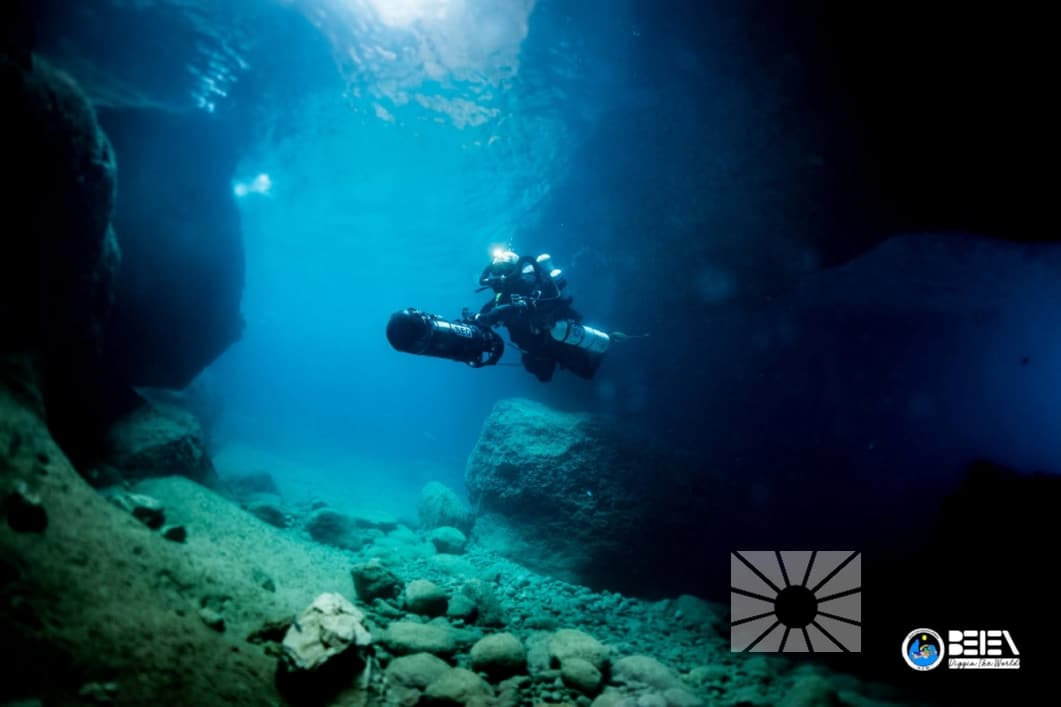
May 5, 2023 | Activities/Services, Cumbre del Sol
In Poble Nou de Benitatxell we find wonderful and unknown places, natural paradises of immense beauty, such as the Riu del Moraig or Riu Blanc, an underwater river of fresh and salt water unique in the world made up of numerous sinkholes and galleries.
Few people have ventured into this unknown cavity in the very bowels of the earth. However, since last month and thanks to the Moraig Exploration Group (GEM), formed by divers Eliseo Belzunce, Carles Ramoneda, Joel Borrazas, Guaica Armisén, Jonathan Alcántara, Vicente Gil, Belén Andrés, José María Cortés, Josi Olave, Sasha Karnilovich, Óscar Dolcet, Emanuel Ávila, Albert Pete and other expert geologists, oceanographers, marine biologists, etc. who collaborate in their studies, we know a little more about this gift of nature.
Since 2013, this group of cavers from all over Spain has taken on the challenge of diving into its depths, and has managed to go where no one has gone before. Others tried before to complete the studies carried out by José María Cortés or the German Bernhard Pack, who died in 1992 during a dive in the Moraig. They reached a distance of 1,125 metres in this complex grotto and, later, a group of English researchers reached 1,350 metres.
-
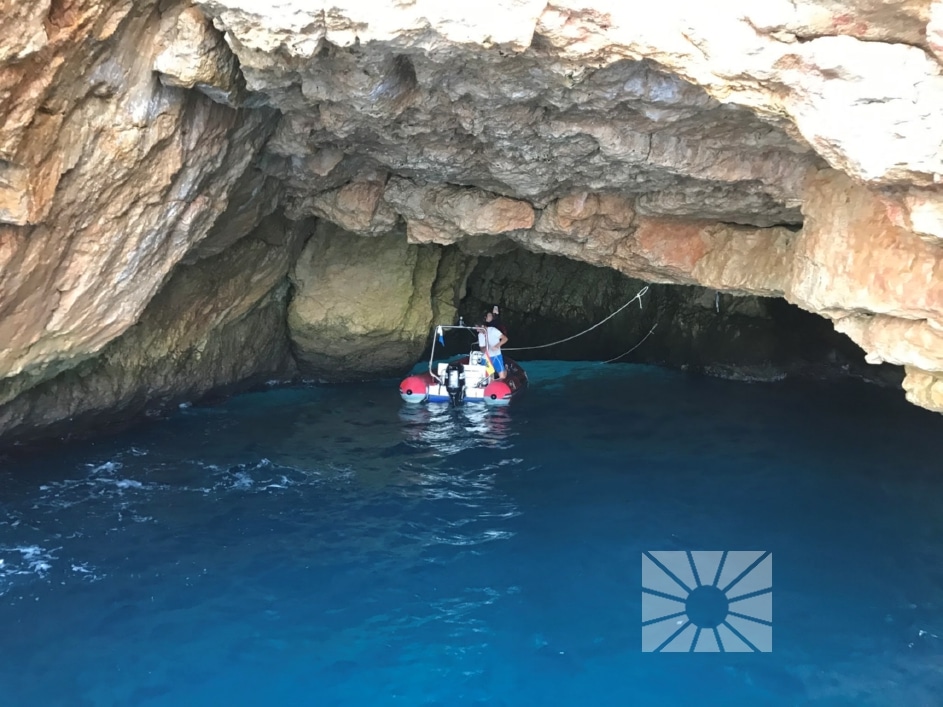
-
Image courtesy of. Poble Nou de Benitatxell Town Council
-
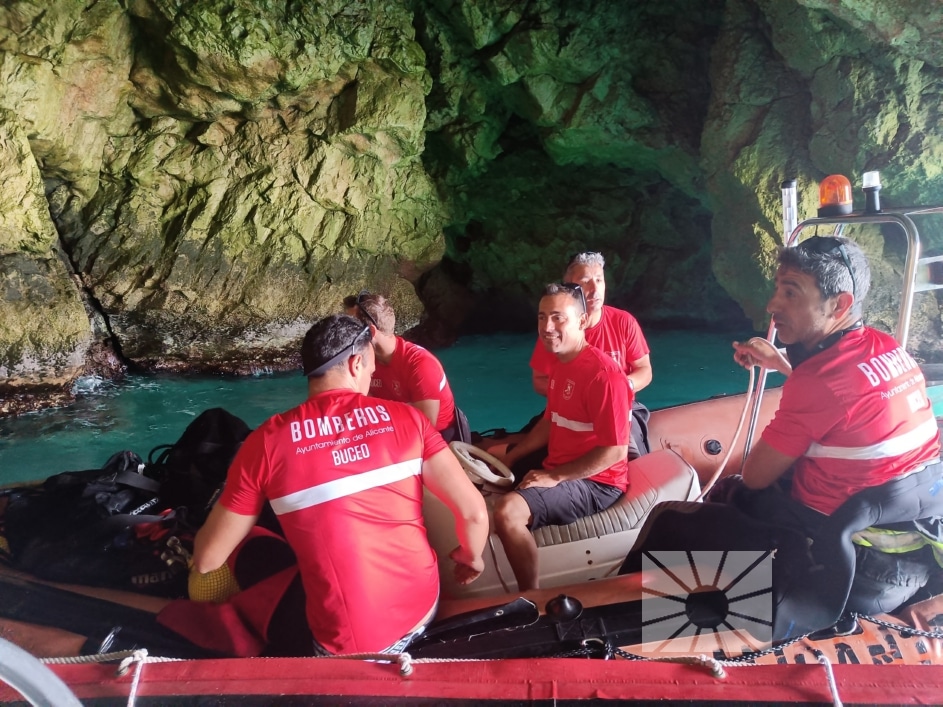
-
Image courtesy of. Poble Nou de Benitatxell Town Council
-
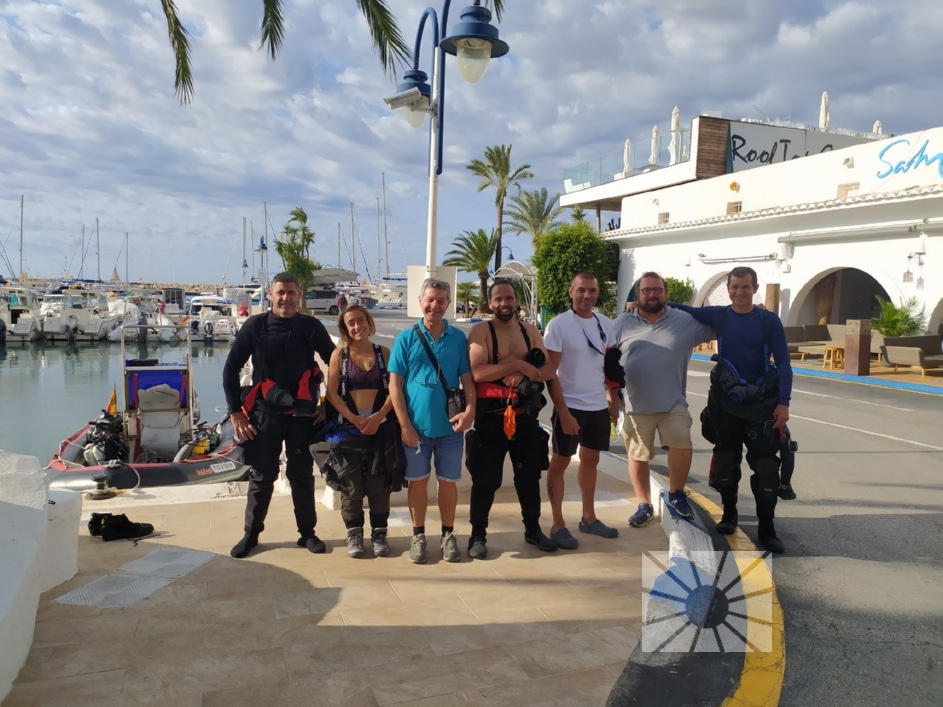
-
Image courtesy of. Poble Nou de Benitatxell Town Council
-
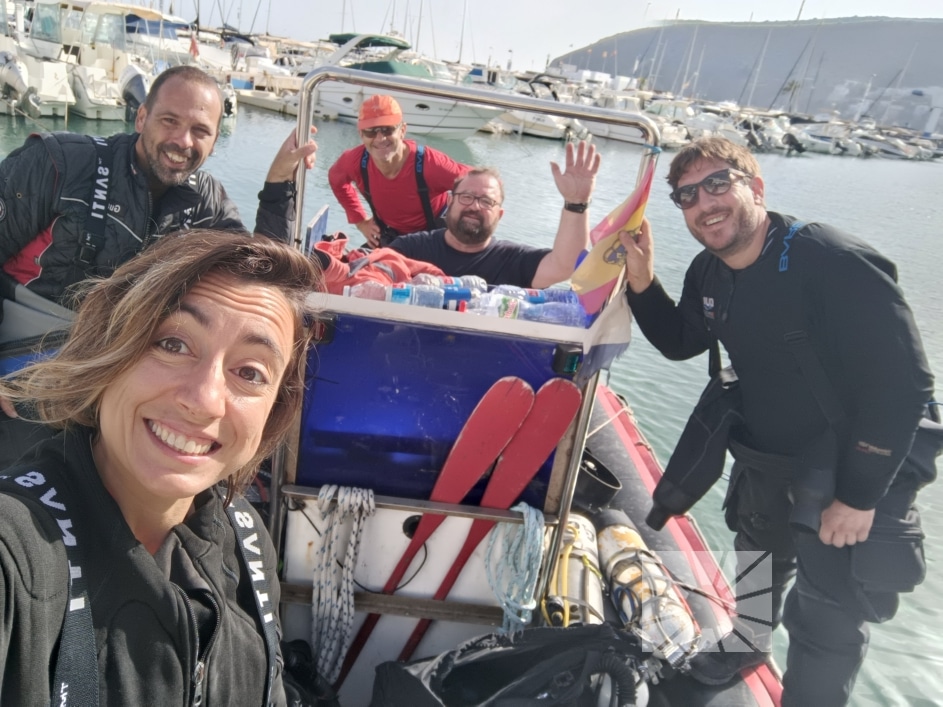
-
Image courtesy of. Poble Nou de Benitatxell Town Council
But the GEM has managed to double that figure and reach a distance of 2,500 metres and a depth of 100 metres. And not only that. Although the furthest end is 2,500 metres, in total, if you add up the distances of all the secondary galleries, the cave now has 6,000 metres of known development, while the last map developed by Bernhard Pack was about 2,500 metres, says Eliseo Belzunce, one of the group’s divers.
The professionalism of the explorers and the technical advances, which are many compared to what they were in the 1990s, have contributed to this progress. The Moraig Exploration Group has equipment that allows it to stay underwater much longer and does not emit bubbles, much more powerful lighting and faster tugboats with more autonomy. “It all adds up and means that things that seemed unthinkable before can now be done more easily”.
That’s for sure. The risk is always there. “You are out of your environment and any small mistake can cause an accident. However, we are a team with a lot of training, preparation and technique, and the problems we can have underwater are foreseeable problems”.
The last time they were in the cave was last January 2023. “We went because it hadn’t rained since the end of November and we thought the visibility conditions were going to be very good”. Surprisingly, it wasn’t, so they went about equally important tasks, such as passing the scooter to get the map out of a secondary gallery.
Now, after all the exploration work, they hope to soon be able to publish a map with the latest advances made to date. “We are taking volumes out of the cave and taking data on bearings, distances, depths, etc. to be able to produce it. And it will be the most complete and developed map of this sea cave. The one of the places never explored in the Riu del Moraig.
We will continue to keep you informed of the progress and discoveries of the Moraig Exploration Group (GEM).
Press release: Ayto Poble Nou de Benitatxell

Apr 13, 2023 | Benitachell, Cumbre del Sol
If you are one of the lucky residents of Cumbre del Sol, you are bound to have heard of Benitachell, the municipality where our exclusive development is located. However, if you would like to discover all its services and learn more about its history and there’s a lot more to that than you might think, keep reading and we’ll give you all the details.
Firstly, we look back at the history of the municipality which has a fascinating past given the different cultures of those who inhabited its villages and farmsteads. Islamic culture is one example, having given the place its name, as well as naming other districts such as Moraig, the beach at the foot of our mountain that is one of the most treasured spots in the Mediterranean. Although if we’re talking place names, did you know that the official name is El Poble Nou de Benitatxell? That’s because it was the last village to be repopulated by Christians in this part of La Marina.
Dicover the charms of Benitachell
Now that you know a little more about this lovely little town, how about taking wander with us around its historic centre? We start at the Jaime Llobell oratory or chapel of prayer. Entrance to the hermitage leads into an interior patio where you can admire the simple baroque style with its neoclassical touches. A weekly mass is held in the hermitage on Saturday evenings. Back in the open again, just 5 minutes away, after crossing the calle de la Pau and calle Mayor, you come to the Town Hall, with its rough-hewn stone façade, a material that is used widely in the area. Continue on to the church square, where you will come to the town’s most prized monument located at its highest point, namely the church of Saint Mary Magdalen. Don’t be put off by its rather austere exterior, inside it is richly decorated mainly in white and gold. And finally, you have to visit El Portalet, the gateway leading to the back of the church square and behind it you will find the lookout point or mirador with views of Montgó natural park, Cabo de Sant Antioni and the bay of Jávea. Don’t forget to round off your walk with a good meal, and on the Town Hall web site you’ll find all the restaurants in the area, why not try one?
A village with every service and plenty of things to do
Benitachell has all the services that you need within reach, such as schools, post office. Police station, pharmacy, health centre etc. Not only that, but the municipality is committed to the environment and has a green point for Cumbre del Sol residents, located right beside the shopping centre, which encourages recycling, and so that residents can dispose of their waste easily including gardening waste.
However, leisure and entertainment also play a part in this story. Would you like to practise your steps or learn to play an instrument? Sign up to the Municipal School of Music and Dance, although if you are more of a reading type, you can lose yourself among books and stories in the Municipal Library. Not only that, but the Town Hall is always planning new activities and it just so happens that we are right in the middle of the Mitjafava Fest, with a series of events which will be continuing until 23 April, such as the longest broad bean and the bean with most gallons. You can check out the festival programme here. Another interesting activity for making the most of Benitachell is Maria Monfort’s Paisatges de la meua terra Exhibition which you can find at the Municipal Market until 15 May.
Now that you have all the information you need to get the most from Benitachell, remember to look out for our upcoming blog posts to keep abreast of everything that’s going on in Residential Resort Cumbre del Sol.
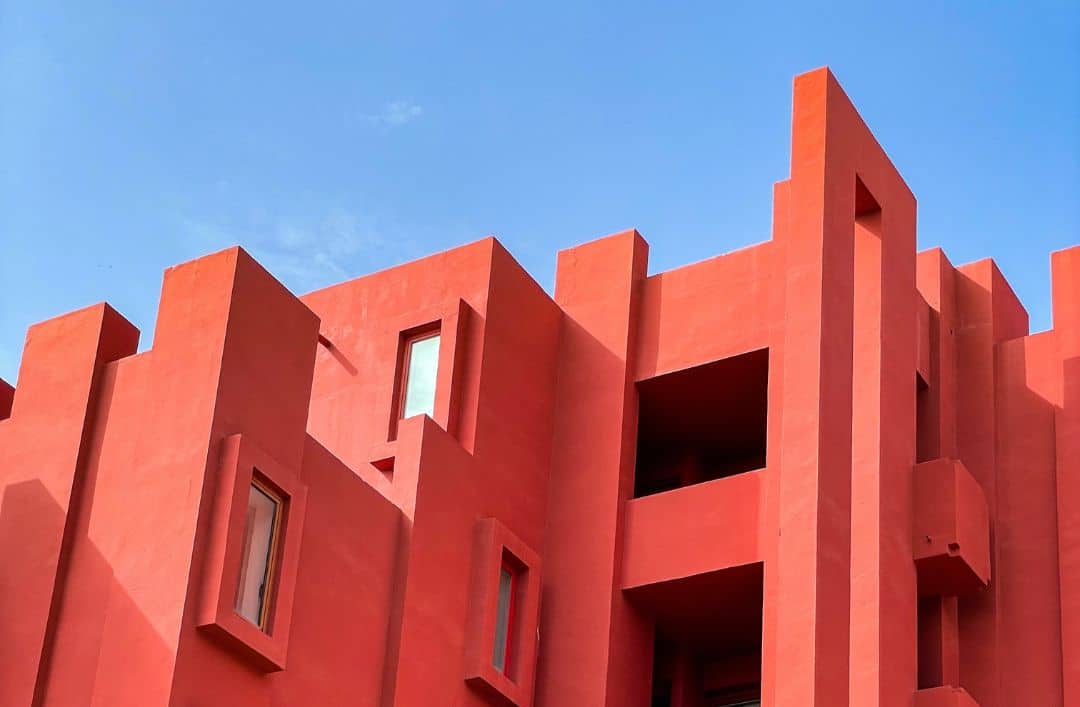
Apr 4, 2023 | Activities/Services, Cumbre del Sol, Other towns
The Costa Blanca Norte is a paradise on earth. Not just because of its incredible climate but also for its many different landscapes and scenarios. Grab your mobile phone or camera, make sure you have plenty of battery, and get ready to take some stunning photos!
The Red Wall in Calpe
If you are a fan of Instagram you will be well aware that the above photo pictures the Muralla Roja or Red Wall. This construction is located in the Manzanera development and was designed and built by Ricardo Bofill. Moreover, this just happens to be the 50th anniversary of its construction. It was inspired by African adobe towers and it is striking for its characteristic range of colours and its straight lines. The building has been declared a cultural heritage site. The stairs actually inspired those that feature in the famous Squid Game series. And given its rather peculiar beauty it has been used as the scenario for numerous commercial videos for brands such as Zara. It is certainly one of the coolest places on the Costa Blanca Norte!
Cala Barraca in Jávea
This rocky cove is also known as Portitxol as it looks out onto the island of that name, which is some 300 metres across. You can get to the island by canoe or Jet Ski. You could also swim there but be careful if it is windy. This little beach is also striking for its white fishermen’s huts and the well-known blue door. One interesting activity in this area is scuba diving. And other sports include canoeing. Make the most of the dawn light for a truly memorable photo!
Forat de Bernia in Benissa
If you have ever been looking for photos of the beaches in Costa Blanca Norte, you will certainly have come across a picture of this place. It is actually an aperture in the rocks that affords a fantastic view of the bay of Altea. To get there first you must walk along a little hiking trail. It is an easy enough, however as the path can be a bit stony it is best to wear appropriate footwear. It is also gets quite busy along the trail so if you want a photo without lots of people, make sure you set out early.
Altea old town centre
Altea is a charming little town ideal for taking a stroll with your camera. The narrow streets of the old town are a well-known scenario. In fact, the place is often referred to as the “Balcony of the Mediterranean”. It has several iconic spots such as the Glorieta del Maño lookout point. Although if you are looking for something a little bit different, just go for a wander around. However, be ready to climb a few steep hills… The old town centre of Altea is so lovely that a snapshot of just about anywhere here would be worth uploading to your Instagram feed.
Cala Granadella in Jávea
The Cala de la Granadella is close by Cumbre del Sol. This little cove is famous for the blue colour of its waters that ranges from turquoise to emerald green. It is such a lovely beach that it tends to be very popular with visitors. To protect the place, sometimes daily visitor numbers are restricted. As a result we suggest you visit this beach out of season. Make the most of the proximity of your home to take some fantastic photos! It is the perfect scenario for snapshots of nature or water sports such as snorkelling.
The summit of Peñón de Ifach in Calpe
This peak or Peñón as it is known locally is one of the most iconic spots on the Mediterranean coast. And especially appreciated in the Costa Blanca Norte. The limestone peak rises to 332 metres. It has been declared a Nature Reserve and as it receives so many visitors, it is necessary to apply for permission to visit. The reason is that visits are restricted to a daily quota of 300 people. Therefore, if you are thinking about taking some photos for your social networks, bear that in mind. It is a truly iconic place with enormous charm. You won’t want to leave without taking a great photo!






